NVIDIA GeForce GTX 680 Launch Recap
by Andrew Cunningham on March 24, 2012 10:00 PM EST- Posted in
- GPUs
- GeForce
- Kepler
- GeForce GTX 680
- NVIDIA
If the numbers are true, then most of you have already read our Kepler review, and you know that the card has made quite a splash - it's the highest-performing single-GPU card you can buy today, and it's got solid power consumption and a lower price than the AMD Radeon HD 7970 to boot. Kepler still needs to trickle down through the rest of NVIDIA's lineup, but for now NVIDIA has the high-end sewn up. Let's look at what its partners have put together.
| ASUS | EVGA |
Galaxy |
Gigabyte | |
| Part Number | GTX680-2GD5 | 02G-P4-2680-KR | 68NPH6DV5ZGX | GV-N680D5-2GD-B |
| Core Clock | 1006 MHz | 1006 MHz | 1006 MHz | 1006 MHz |
| Memory Clock (Effective) | 1502 MHz (6008 MHz) | 1502 MHz (6008 MHz) | 1502 MHz (6008 MHz) | 1502 MHz (6008 MHz) |
| Boost Clock | 1058 MHz | 1058 MHz | 1058 MHz | 1058 MHz |
| Dimensions in inches (dimensions in mm) | 10.08 x 4.37 x 1.47 (256.03 x 111.00 x 33.34) | 10 x 4.38 x ?? (254 x 111.25 x ??) | 10 x 4.33 x 1.57 (254 x 109.98 x 39.88) | 10.83 x 4.96 x 1.50 (275 x 126 x 38) |
| Outputs | DisplayPort, HDMI, DVI-I, DVI-D | DisplayPort, HDMI, DVI-I, DVI-D | DisplayPort, HDMI, DVI-I, DVI-D | DisplayPort, HDMI, DVI-I, DVI-D |
| Included accessories | 4-pin to 6-pin | DVI to VGA, 2x 4-pin to 6-pin | 2x DVI to VGA, 2x 4-pin to 6-pin | 2x 4-pin to 6-pin |
| Warranty | 3-year | 3-year | 3-year | 3-year |
| Price (Newegg) | $499.99 | $499.99 | $499.99 | $499.99 |
|
MSI |
PNY | Zotac | |
| Part Number | N680GTX-PM2D2GD5 | VCGGTX680XPB | ZT-60101-10P |
| Core Clock | 1006 MHz | 1006 MHz | 1006 MHz |
| Memory Clock (Effective) | 1502 MHz (6008 MHz) | 1502 MHz (6008 MHz) | 1502 MHz (6008 MHz) |
| Boost Clock | 1058 MHz | 1058 MHz | 1058 MHz |
| Dimensions in inches (dimensions in mm) | 10.63 x 4.38 x 1.53 (270 x 111.15 x 38.75) | ??? | 11.10 x 4.9 x 2.3 (281.9 x 124.46 x 58.42) |
| Outputs | DisplayPort, HDMI, DVI-I, DVI-D | DisplayPort, HDMI, DVI-I, DVI-D | DisplayPort, HDMI, DVI-I, DVI-D |
| Included accessories | DVI to VGA, 4-pin to 6-pin | DVI to VGA, 4-pin to 6-pin, HDMI cable | DVI to VGA, 2x 4-pin to 6-pin |
| Warranty | 3-year parts/2-year labor | 1-year (Lifetime with registration) | 2-year |
| Price (Newegg) | $499.99 | $529.99 | $499.99 |
As we've noted in past recaps, you should take these card measurements with a grain or two of salt. Manufacturers haven't standardized on a unit of measurement for their cards - some measure in inches and some in metric. I've done the necessary conversions and presented all measurements in both inches and millimeters, but manufacturers play a bit loose with these measurements and the actual physical dimensions may not exactly match the dimensions given on the spec sheet.
Common to all of these cards is 2GB of GDDR5 on a 256-bit bus and all of Kepler's features - in fact, most of these cards have pretty much everything in common with one another, from the across-the-board stock clocks to the display outputs to the single-fan, dual-slot coolers to the lackluster bundles of accessories. This isn't uncommon with high-end launches of all-new architectures - we saw the same thing happen in our Radeon HD 7970 launch recap, another crop of cards that stuck to the reference design.
As such, there's not a ton to say about them, so I'll just make notes below when there's something about the card that makes it different from the stock card that we reviewed a couple of days ago.
ASUS (Product page)
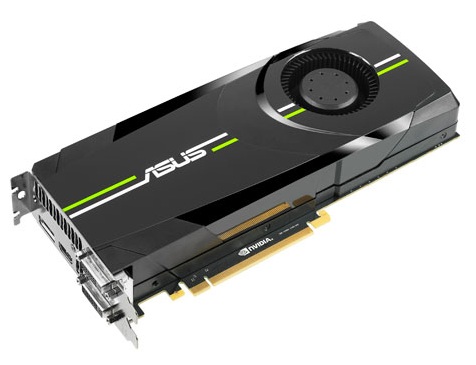
EVGA (Product page)
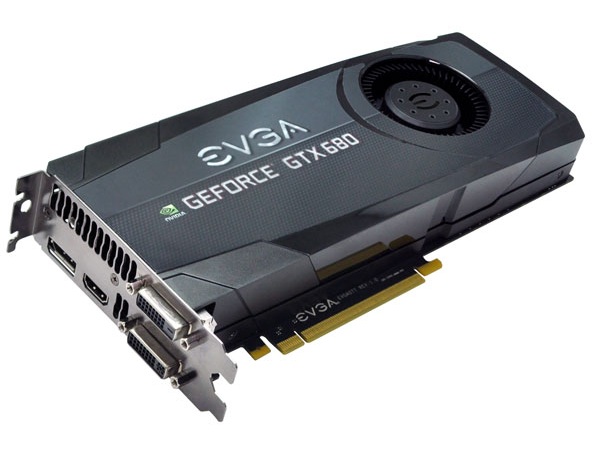
Galaxy (Product page)
Gigabyte (Product page)
MSI (Product page)
MSI's graphics cards usually have a 3-year parts and 2-year labor warranty, and this card is no exception.
PNY (Product page)

This card is the only one in the lineup that costs more than $500, and there are a couple of reasons why: one is the lifetime warranty you can get by registering the card, and the other is the bundled HDMI cable. It's the only card in the lineup with anything more than power cables and DVI to VGA adapters. It's also the only card for which I can't find measurements (Amazon lists the length at eight inches, which I find suspect since the rest of the cards are at least ten). The card's dimensions should be similar to the others.
Zotac (Product page)
Zotac's is the only card in this lineup with a 2-year warranty instead of the 3-year warranty shared by most of the rest of them.


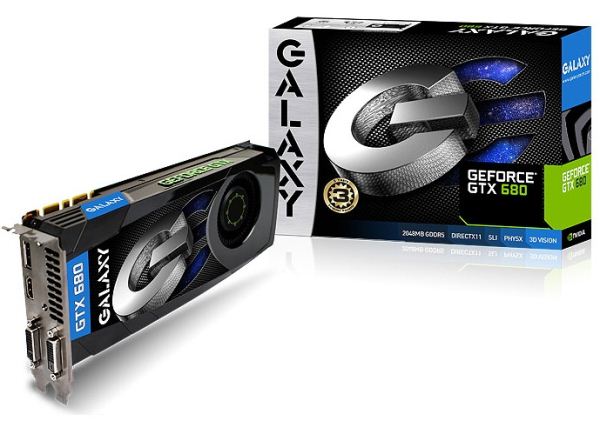
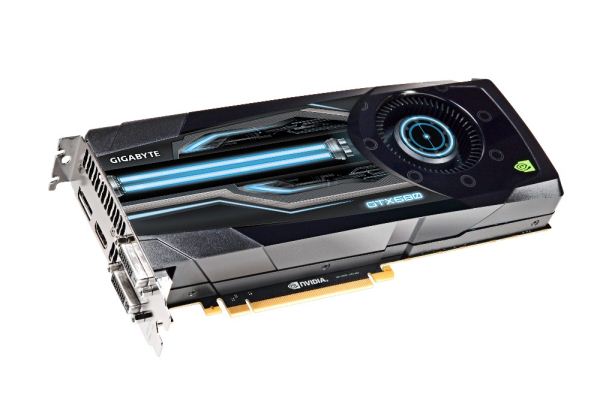
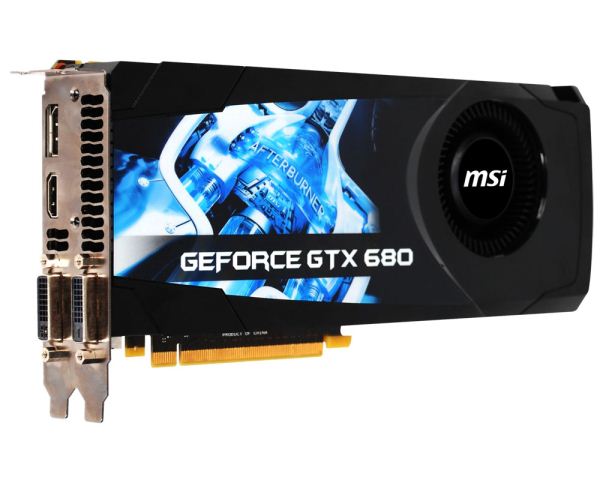
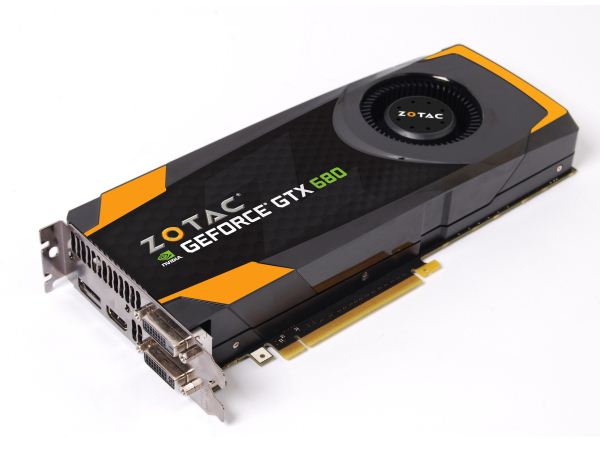








29 Comments
View All Comments
Iketh - Monday, March 26, 2012 - link
Where did you get your $150 price difference?ShieTar - Monday, March 26, 2012 - link
I do not know any reliable pirce-comparison site for the US market, but is the "costing $150 LESS" actual reality for the 680 vs the 7970 over there? In Germany, the 680 goes for 470€ to 510€, while the 7970 is sold for 440€ to 510€. As you can see, the shops are summarily ignoring AMDs pricing suggestion.Also, I am not sure about the 680 wining 75% of the races. Anandtechs own review may offer a nice spread of games, but it does not include a Bioware title, and those usually see AMD in the lead.
But if you are serious about gaming on two 30'', then I assume the 2GB card might run full in some high quality texture / strong AA situations. Specifically since the AMD also has the higher memory bandwidth (384bit @ 1425 MHz vs nVidias 256bit@1500 MHz)
Death666Angel - Monday, March 26, 2012 - link
Agreed mostly. Just one thing: AMD 7970 has 1375MHz default memory. :-)Blazorthon - Wednesday, March 28, 2012 - link
I wouldn't say default as much as I would say that the 7970 has a 1375MHz reference memory frequency. Technically, if a 7970 had 1425MHz strait from the factory (a factory overclock) instead of 1375MHz it could still be said to be that particular model's default memory frequency. However, you are still right in that the 7970 has a 1375MHz reference memory frequency.Valis - Wednesday, March 28, 2012 - link
Who the hell dishes out €500/$500 on a Nvidia gfx card, now and then. A 200-300 card usually does the job.:-/ overpriced s*it.
Blazorthon - Wednesday, March 28, 2012 - link
That depends on the game(s) resolution, quality settings, and AA. A typical $200-300 (USD) card would include the GTX 560 TI, Radeon 6950, GTX 560 TI 448 core, and several others. Sure, they're good enough for 1080p in the most intensive games, but that's it. If I want to play at 2560x1440/2560x1600 or an eyefinity resolution or on a 3D monitor (or more than one), well then it will take a lot more performance. You would need at least two 6950s or GTX 570s to play at 2560x1440, if not two 6970s, with maxed out quality settings and AA in popular games like Metro 2033 or BF3. Want a 5760x1080 Eyefinity setup in those games? Well, that may need at least three 6970s or GTX 580s.Wait, what about a 3D 5760x1080 setup? Well, there you need something like three or four 7970s. Same for a 7680x1600 Eyefinity setup. If someone can afford it, why should they not get it just because you think it's more than necessary? A Ferrari is a lot more than necessary to drive to work, but people buy them nonetheless.
Besides that, the 680 actually isn't overpriced. The 7970 is the overpriced card here. The GTX 680 has very good performance for it's price and has similar performance for it's price to the $200-300 cards. It's not quite as god, but the fact that it has similar or even lower power usage than most of those $200-300 cards, you can save up the rest of the difference over two to thee years. Also, if I game at 1080p, I'd rather buy a $500 card that can last me five to six years instead of a $200-300 card every year and a half or two to keep playing at 1080p.
That time frame is a call back to the Radeon 4870X2 and GTX 295 which are very old cards, but can still play today's games (albeit in DX9) at 1080p and could be bought for around $500 several years ago. In fact, they could probably play 1080p in several future games too since the 6950 can do it now and they are roughly equal to a 6970 or GTX 570 or GTX 480 or Radeon 7850.
Galidou - Monday, April 9, 2012 - link
Well I think he meant by ''does the job'' that it will run everything in 1080p with 90% of the options enabled(the remaining 10% not being much noticed unless you really take a ''sunday walk'' in everygame you play). And that concerns about 99% of the people in the world. You know that the extreme gamers tend to be 1% of the pooulation and even less. The cards that sells the most are worth 100$ and below...Considering now that most games(if not all of them) are console ports, video card performance over time is a changing factor. Before that, a 500$ card offered you performance over time worth the upgrade. But now... a 120$ card(like the radeon 6850 I have) just handles everything in 1080p at high/very high/ultra details without a hitch... Which wasn't possible 5 years ago... 8800 gt and 4870 changed things but before, to get premium fps you had to pay big bucks... Everything worth 120$ couldn't ever perform like a 6850. Hence the console port period we live in.
AdamK47 - Friday, March 30, 2012 - link
Launch Recap: Not enough cards released at launch.stimudent - Tuesday, April 10, 2012 - link
I asked about Dirt 3 for the PC at the mall last week . The probably early 20 something clerk said we don't carry PC games anymore. He was also looking at me probably thinking 'here's one of those old 30 to 40 something people who still uses a PC to play games'.That was my feeling.
The other store like it in the mall had 3 small shelves about a meter in length for PC games. The whole rest of the store was for consoles.
That makes me wonder why manufacturers are still making cards like this.